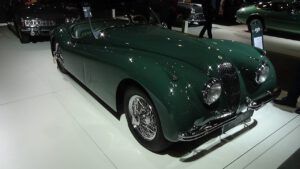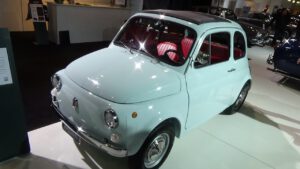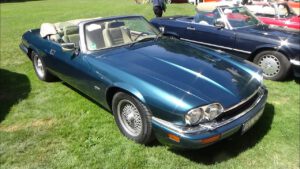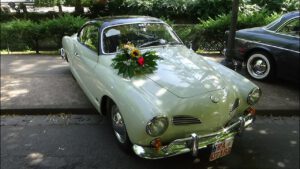The Citroen 2CV, developed in the 1930s aimed to democratize motorization in France with its emphasis on fuel efficiency and robust suspension. The 2CV debuted in 1948, fascinating drivers with its simplicity, affordability, and adaptability to various environments. Over four decades of production, the 2CV became a symbol of liberation, anti-consumerism, and carefree living, enduring beyond its discontinuation in 1990 as a cultural icon representing accessible freedom and the spirit of adventure.
The origin of Citroën’s revolutionary 2CV that motorized the masses in France
In the 1930s, Citroën‘s director, Pierre Boulanger, envisioned a vehicle that would bring motorization to the masses in France. He tasked his design team with creating a car that was both maneuverable and incredibly fuel-efficient, aiming for a consumption of just 3 liters per 100 kilometers. Additionally, it needed to have a suspension so robust that it could traverse a plowed field without breaking a single egg in the trunk – a crucial consideration for the agricultural landscape of France at the time.
After two years of intensive research, the first prototype, named TPV (Toute Petite Voiture), emerged in 1937. While rudimentary with only one headlight and a manual windscreen wiper, it laid the foundation for what would become an icon.
However, the project faced a setback when World War II erupted. Bombing raids destroyed the factories and most of the prototypes, leaving just one survivor. Despite this setback, Citroën persisted, and in 1948, the 2CV made its debut at the Paris Motor Show. It boasted modest specifications – four wheels, nine horsepower, and a maximum speed of 70 kilometers per hour – but it marked a revolution in automotive history.
The 2CV’s charm lay in its simplicity. It met Boulanger’s initial criteria: space for two farmers and their produce, a minimum speed of 60 kilometers per hour, and extraordinary fuel efficiency. Despite its quirks, like the roll-up roof and unconventional handling, it was embraced for being affordable and economical, endearing it to a generation of drivers who fondly recall their adventures with the beloved “Schunkelmobil.”
The Citroën 2CV: A Symbol of Simplicity and Freedom
With its distinctive plump and charming silhouette, as well as its unmistakable engine hum, the Citroën 2CV has achieved worldwide recognition.
The 2CV’s affordability was a key selling point. Its uncomplicated technology translated to low maintenance costs, while the small engine capacity resulted in favorable tax rates. Initially boasting a modest 7 kW/9 hp, the 375 cubic centimeter boxer engine made upkeep affordable.
This unpretentious vehicle, built on a basic box frame, captured the hearts of the public. It embodied a fresh approach to personal transport, catering to the “everyman,” and swiftly became a symbol of liberation.
Due to resource shortages, Citroën faced initial production constraints, leading to waiting lists of up to six years. Nevertheless, the 2CV’s economical design, easy maintenance, and spacious interior solidified its status as the quintessential student car in Europe, emblematic of a non-conformist and conscientious approach to life.
Beyond its economic advantages, the 2CV’s user-friendly nature extended to its adaptability – doors and seats could be effortlessly removed. Yet, its most compelling feature was its supple and responsive suspension, delivering a smooth ride even on rugged roads.
2CV: From Ugly Duckling to Icon – Initial Reactions and Surprising Moments
Upon its debut, the Citroën 2CV elicited a range of reactions from the press. The satirical French magazine, “Le Canard enchainé,” humorously dubbed it a “tin can” and envisioned it as a “model of free camping for four sardines.” However, it was a Dutch journalist who bestowed upon the car the endearing moniker that would resonate with drivers for decades: “An ugly duckling.”
The 1948 Paris Salon witnessed moments of astonishment as visitors encountered the peculiarly shaped 2CV. Some questioned whether this unconventional vehicle, seemingly an anti-dream car, was to be taken seriously. Even the French President, Vincent Auriol, couldn’t hide his surprise as he reluctantly took a seat in the rear of the “ugly duckling,” his facial expressions betraying his bemusement.
Notably, the 2CV Sahara caused a sensation in 1958. True to its name, it was designed for desert travel, showcasing the car’s versatility and adaptability in extreme environments. This innovative variant further solidified the 2CV’s reputation as a remarkable and unconventional vehicle.
Engineering Brilliance: The Innovative Design of the Citroën 2CV
Influenced by the Bauhaus aesthetic, the Citroën 2CV may not exude elegance with its rounded interior and small circular headlights, but it possesses a unique charm. The four-door steel body, while not self-supporting, was ingeniously bolted to the box frame chassis, a cost-effective design choice. Instead of a fixed steel roof, a roll-up vinyl top provided flexibility.
Handling the 2CV revealed its off-road prowess and notable lateral tilt while cornering. The combination of a lightweight body, low-slung boxer engine, and fuel tank placement resulted in a favorable center of gravity, virtually eliminating the risk of tipping over. Initially, drum brakes were standard, but in 1981, disc brakes were introduced at the front.
The air-cooled, two-cylinder boxer engine, starting with a displacement of 375 cm³, generated 6.6 kW (9 hp) and featured a standard four-speed gearbox. Subsequent models saw various stages of enhancement. The 2CV6, introduced in 1970, housed a 602 cm³ engine with 21 kW (28 hp). Remarkably, all 2CVs could be started using a lever crank. The earliest 9 hp version achieved a top speed of around 70 km/h, while the final models, boasting 29 hp, reached impressive speeds of 113 km/h. The 2CV stands out as one of the few vehicles with a remarkably tripling of its basic engine power throughout its development stages.
End of an Era: Citroën 2CV Bids Farewell After 41 Iconic Years
Production of the beloved Citroën 2CV commenced in 1949, and for four decades, it captured the hearts of drivers worldwide. As the final chapter approached in 1990, the 2CV found its last home in Portugal, where the dedicated workforce ensured a fitting farewell for this cult vehicle.
In February 1988, the Levallois plant in France halted 2CV production. Then, on a poignant July day in 1990, precisely at 4 pm, the final 2CV rolled off the assembly line in Mangualde, Portugal, marking the end of an era. This last 2CV, a grey 2CV6 “Charleston,” swiftly became a coveted collector’s item.
Over its remarkable run from 1949 to 1990, a total of 3,872,583 Citroën 2CVs were crafted. The 2CV also served as the foundation for other iconic Citroën models like Dyane, Ami, and Méhari. Its successor, the Citroën AX, would carry on its legacy.
Critics pointed out the 2CV’s technical and conceptual obsolescence upon its discontinuation. Despite its aging design, the enduring cult status ensured sustained sales, particularly in Germany and the UK. By the late 1980s, annual sales had dwindled from a peak of over 150,000 to a mere 20,000. Stringent emission standards led some countries, like Switzerland and Austria, to halt new registrations before production ceased, signifying the end of an automotive era.
2CV: A Cultural Icon Defying Conformity and Celebrating Freedom
The Citroën 2CV transcended being merely a car; it became a symbol of anti-consumerism, affordable freedom, and a labor of love in metal. Post-World War II, it empowered a generation of free-spirited hippies to embark on adventures far and wide. As the quintessential student vehicle, it represented a rejection of status symbols and a non-conformist, consumer-critical way of life.
From 1960 to 1990, the 2CV found a fervent following among the alternative student and leftist-intellectual circles. It became a cultural touchstone, a defiant beacon against materialism and power, providing boundless joy in its modest frame. During the 1960s, it played a central role in the “Summer of Love” celebrations, while also serving as a protest vehicle against ostentation and excess from 1968 onwards.
Eco-activists also found solace in the 2CV, which notably experienced its peak sales in 1974 after the oil crisis. Its legacy extended beyond its successors, with the likes of Ami, Dyane, Méhari, LN, Visa, AX, and Pluriel fading into obscurity. The 2CV’s enduring charm captured the imagination of advertisers, and its myth as a virtually indestructible car was perpetuated, further solidifying its status as a symbol of freedom, adventure, and carefree living.
Citroën 2CV: Pioneering Accessible Freedom in 1950s and 60s France
The Citroën 2CV, affectionately known as the “deudeuch” stands as an emblem of a time when freedom was a promise open to all in 1950s and 60s France. Conceived in the 1930s with a vision to mobilize the working class, this vehicle was meticulously crafted with an emphasis on practicality and economic efficiency. The 2CV not only embodied utilitarian design but also evoked a sense of nostalgia for a simpler era.
The open road, once a symbol of boundless possibilities, became the backdrop for countless adventures. It was a car that resonated with the collective spirit of the times, promising mobility, affordability, and a taste of freedom for all. Today, the 2CV remains an enduring icon, its legacy continuing to inspire generations with its timeless message of accessibility and liberation.







